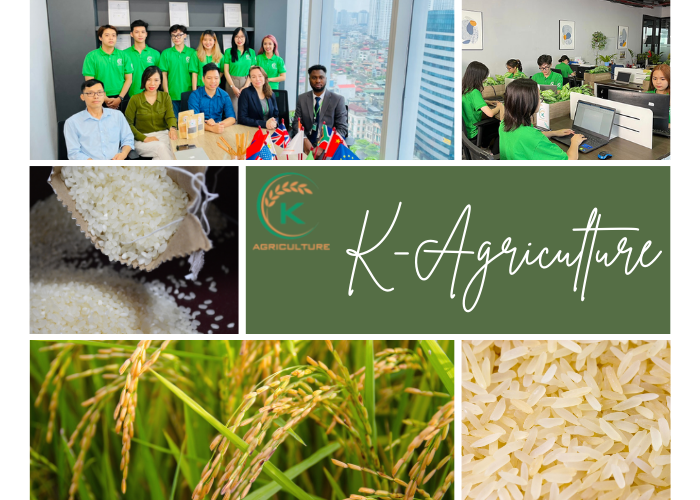Two popular types of rice are jasmine rice and white rice, which are both known for their distinctive flavors and textures. While both are long-grain varieties of rice, there are some key differences between the two that set them apart. In this blog post, we will take a closer look at jasmine rice and white rice and explore what makes them unique. Whether you’re a foodie looking to expand your culinary horizons or simply curious about the world of rice, read on to discover the differences between these two delicious varieties.
Contents
What is jasmine rice?
Jasmine rice is a long-grained version of what is known as fragrant rice or aromatic rice (basmati rice is another member of the family)
In the 1950s, Jasmine rice also referred to as “fragrant rice,” was first introduced in Thailand, where it originated. Over time, it has become a staple in the diets of Thai consumers and has emerged as a significant export commodity for the country.
Jasmine rice is characterized by its long-grain structure, recognizable aroma, sweet and nutty flavor, and delicate texture. Jasmine rice is the main product of many rice export companies, including K-agriculture which is a leading company trading agricultural products.

What is Jasmine rice?
What is white rice?
White rice is commonly referred to as fully polished or pureed rice, as the husk, bran, and germ of the grain are removed during its processing. This milling and polishing process leads to the loss of several essential nutrients in the rice grain.
However, the removal of these outer layers also limits the penetration of harmful insects and microorganisms, resulting in longer shelf life for white rice as compared to brown rice.

What is white rice?
The differences between jasmine rice and white rice
From their distinct flavors and aromas to their nutrient profiles and cooking methods, these two grains have unique characteristics that set them apart. By understanding the differences between these two popular types of rice, you can make informed decisions about which one to choose based on your personal preferences and nutritional needs.

Differences between jasmine and white rice
You can distinguish jasmine rice and white rice based on the following factors:
Appearance
Jasmine rice grain is long (about 6.8mm) and round at the tip. White rice is divided into three varieties which are short-grain white rice, medium-grain white rice, and long-grain white rice.
While it’s true that white rice is always white, it’s important to note that different jasmine rice varieties can come in a range of colors including white, brown, red, purple, or black. The color of the rice depends on whether the bran layers are intact or removed during processing. Brown jasmine rice is the whole grain with all layers intact, while white jasmine rice has been polished to remove the bran layers. Red, purple, and black jasmine rice varieties have varying levels of anthocyanins, which give the rice its distinct color and provide additional health benefits.

White rice and jasmine rice
Taste
The taste of white rice is relatively bland. Meanwhile, what makes jasmine rice different is that it has a nutty, fatty, and sweet flavor. That is the reason why it is a preferred choice for many people worldwide. The flavor profile of jasmine rice can add depth and richness to any dish it is used in, making it a favorite among food enthusiasts.
Smell
In addition to its taste, jasmine rice is also recognized for its aromatic properties. It belongs to the aromatic rice category and is well-known for its distinct fragrance. The aroma of jasmine rice is one of its most desirable qualities, and it is often a key factor that draws people towards it. In comparison, white rice lacks any notable aroma and is relatively neutral in smell.
Texture
When it comes to texture, jasmine rice typically has a soft and slightly sticky consistency after cooking, regardless of whether it has been cooked at a low or high temperature. This texture is often preferred in many dishes, as it can provide a delicate and satisfying mouthfeel. On the other hand, white rice is less chewy and sticky.
The differences between jasmine rice and white rice go beyond just their appearance. Whether you prefer the light and fluffy texture of white rice or the fragrant and slightly sticky consistency of jasmine rice, both of these grains have a place in a healthy and varied diet. Ultimately, whether you’re whipping up a quick weeknight dinner or preparing a special meal for guests, both jasmine rice and white rice can be versatile and delicious staples in any kitchen.

Cooked jasmine and white rice
Price
Jasmine rice generally commands a higher price than standard white rice due to its unique aroma and popularity in international markets. Wholesale prices for jasmine rice range from $600 – $650 per ton, while white rice is typically priced at $500 – $580 per ton. This price difference reflects the distinct qualities of jasmine rice, such as its fragrance and softer texture. White rice is more economical, and appealing for large-scale consumption.
Jasmine rice and White rice: Which is healthier?
Compared to white rice, Jasmine is considered to be healthier for a number of reasons. Jasmine rice is recognized for its nutrient-rich composition, particularly jasmine rice’s calories content. Just one cup (50 grams) of brown Jasmine rice contains around 300 calories.
Brown Jasmine rice is also a good source of iron, as well as vitamins B1 and B3, and contains some calcium and potassium. Additionally, it contains vitamin B9, which can be beneficial for pregnancy health, and is a good source of fiber that promotes healthy digestion. It’s important to note that these nutritional benefits apply specifically to brown Jasmine rice in its whole-grain form.

Which type of rice is better for health?
FAQs
Are jasmine rice and white rice nutritionally the same?
White jasmine rice and other types of white rice have nearly identical nutritional profiles. Both are processed grains with the hull, bran, and germ removed, which strips away fiber and many nutrients.
Nutritional comparison per cooked cup:
- Long-grain white rice: 160 calories, 36g carbs, 4g protein, 1g fiber
- Jasmine rice: 181 calories, 39g carbs, 4g protein, 1g fiber
Both varieties are often enriched with iron, thiamine, niacin, and folate to replace nutrients lost during processing. The slight differences in calories and carbohydrates are minimal and not nutritionally significant.
Can people with diabetes eat jasmine rice?
People with diabetes can eat jasmine rice in moderation with careful portion control. Key considerations:
- Glycemic index: Jasmine rice has a medium GI of 68, which can moderately impact blood sugar levels
- Blood sugar response: It can cause blood sugar spikes, particularly concerning for diabetics
- Portion control: Essential to limit serving sizes and pair with low-GI foods, protein, and fiber to slow sugar absorption
- Better alternatives: Brown jasmine rice or other whole grain options are preferable due to their fiber content and slower sugar release
Studies show that replacing white rice with brown rice can reduce type 2 diabetes risk by 16%. Always consult healthcare providers for personalized dietary advice.
How should jasmine rice be cooked differently from white rice?
Jasmine rice requires specific cooking techniques to achieve its characteristic soft, slightly sticky texture:
- Water ratio: Use less water than other rice – typically 1:1.25 ratio (1 cup rice to 1.25 cups water). Regular white rice often uses 1:2 ratio.
- Rinsing: While optional, rinsing jasmine rice 2-3 times until water runs clear removes excess starch and enhances the floral aroma.
Cooking method:
- Bring water to rapid boil with rice
- Reduce to lowest heat, cover tightly
- Cook 12-15 minutes without lifting lid
- Let steam off heat for 10 minutes
- Fluff with fork before serving
The key is using less water and allowing proper steaming time to achieve jasmine rice’s signature fluffy yet slightly sticky texture.
How long can jasmine rice be stored?
Uncooked jasmine rice storage:
- Room temperature: Up to 2 years in original packaging
- Airtight containers: 4-5 years when properly sealed
- Long-term storage: Up to 30 years with oxygen absorbers in sealed containers at cool temperatures
Cooked jasmine rice storage:
- Refrigerator: 3-4 days maximum
- Freezer: Up to 6-8 months
- Room temperature: Never store cooked rice at room temperature for more than 2 hours due to bacterial growth risk
- Storage tips: Keep uncooked rice in cool, dry, dark places away from heat sources. Use airtight containers to prevent moisture, pests, and odor absorption.
K-Agriculture – leading Vietnamese Jasmine rice supplier
K-Agriculture is one of the leading Vietnamese exporters of agricultural products. Equipped with modern manufacturing facilities, and having long experience in producing and exporting agricultural products, K-Agriculture specializes in producing Jasmine rice and has become a big supplier of Jasmine rice to many nations, including Africa, the USA, Asia, and the Middle East. The factory not only provides Jasmine rice but also supplies other high-quality rice such as Japonica, ST24, ST25, ST 21 rice, OM504 rice, OM5451 rice, and DT08 rice at reasonable prices.

K-Agriculture – The best Jasmine rice supplier in Vietnam
Contact us now to buy rice from Viet Nam with the best price via:
WhatsApp: +84855555837
Email: info@k-agriculture.com
Website: k-agriculture.com
To sum up, this post provides the distinctive characteristics of jasmine rice vs white rice and a better understanding of what sets them apart. We hope you find this post helpful. If you have any questions, please comment below and we will support you within minutes!





Please Post Your Comments & Reviews